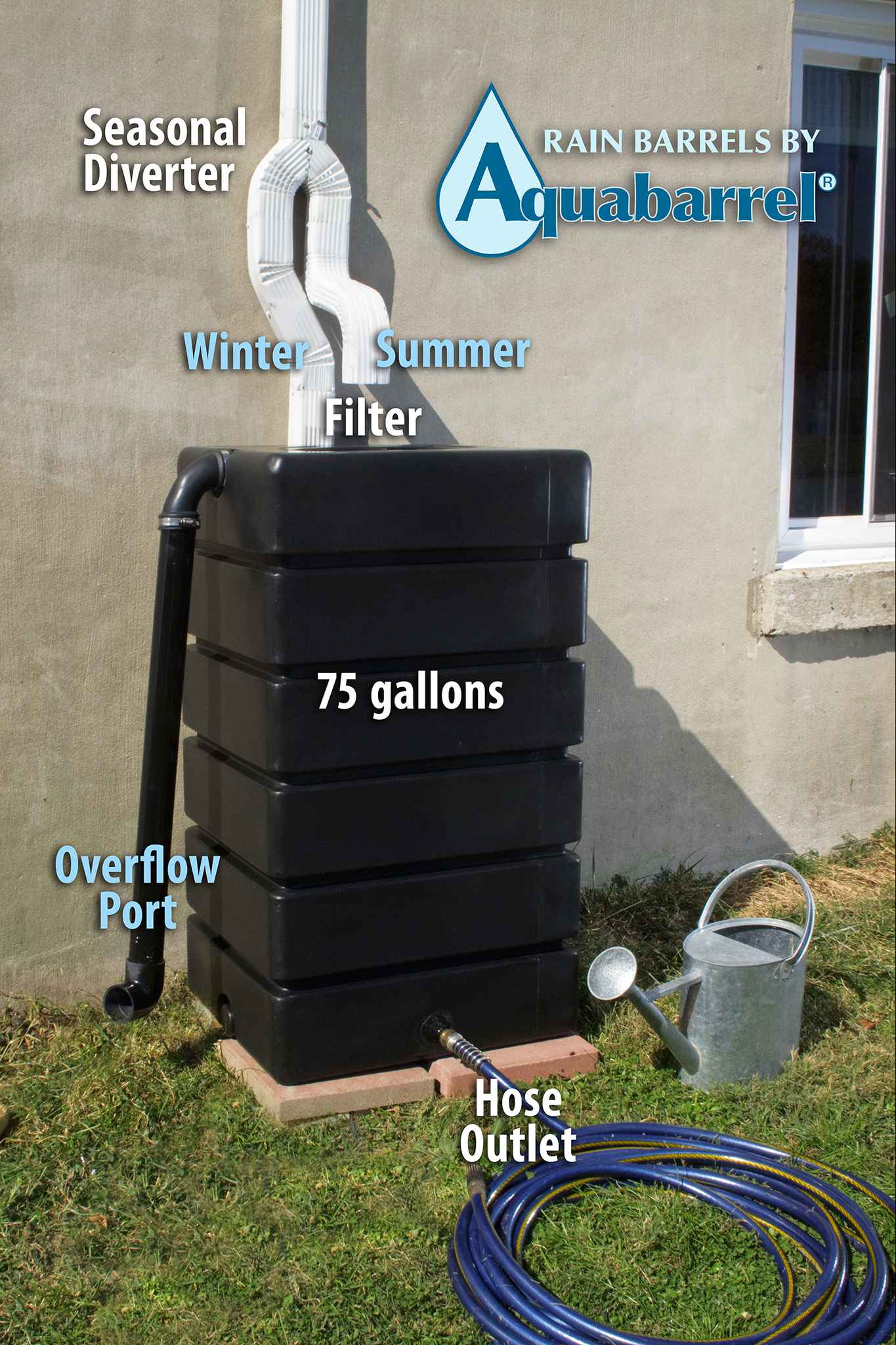 Rain barrels really do help our environment! It’s one way we can do our part to conserve our natural resources. By installing a rain-barrel system at your home you will:
Rain barrels really do help our environment! It’s one way we can do our part to conserve our natural resources. By installing a rain-barrel system at your home you will:
1) Reduce flooding in your yard or your basement, by collecting the water and using it for watering plants or slowly releasing it and allowing it to sink into the ground.
2) Provide your plants with water they will love! Unlike treated water, which is “softened” with dissolved minerals, rainwater is naturally soft. The water stored in your rain barrel is better than municipal water for washing your car and watering indoor or outdoor plants.
3) Save money and water! Instead of water from the faucet, you can use the water you’ve saved to keep your landscape happy and growing. You’ll also reduce your water and sewage bills!
4) Protect our rivers and streams! Water stored in your rain barrel is water that won’t rush off into our streams. Instead, as you use the stored rainwater around the home and garden, it will absorb slowly into the ground, replenishing groundwater supplies. By decreasing the volume of storm runoff, rain barrels also help moderate stream erosion and the resulting pollution that is impairing our waterways.
Installing & Managing Your Rain Barrel System
• Choose your installation location. Place and level barrel on cinder blocks. Ensure steady footing.
• Cut downspout 18” above barrel or install shorter piece from guttering. Add an automatic diverter box and attach the diverter pipe to the barrel.
• Attach garden hose or spigot to the shut-off valve at the bottom of the barrel. To fill barrel, close valve. Open valve to use rainwater or empty barrel.
• Disconnect the barrel from the downspout during winter.
Rain-Barrel Gardening
Montana rain patterns show regular rainfall events occur during April, May and June, just when vegetable gardens and perennial beds are being established. A wise approach is to water annuals and perennials with rain-barrel water and mulch heavily to retain moisture during the drier months of July and August. Occasional rains in late summer will continue to refill the barrel.
Increasing the Capacity of Rain Barrel Storage
Many Park and Gallatin County residents connect more than one rain barrel together at each downspout. Raising the barrels off the ground by placing them on blocks will ease access to the faucet and provide natural gravity to increase water flow.
Managing Heavy Rains
It is essential to consider the impact of heavy rains on your drainage system. An overfull barrel has the potential to cause erosion around your home. If heavy rains are predicted, attach the overflow hose and aim it away from the foundation of your home.
Managing Mosquito's
Regular use of your rain barrel will prevent mosquito eggs from hatching. The rain barrel may be capped with a fiberglass screen that allows water in, but keeps mosquitoes from getting into the barrel to lay their eggs. Also to prevent mosquitoes from breeding, add a tablespoon of cooking oil to form a sheen on the top of the water.
However, if you are still concerned about mosquitoes breeding in your rain barrel, you can add a whole or a half of a Mosquito Dunk to the water to kill mosquito eggs. Mosquito Dunks can be purchased at most garden supply stores and from www.AquaBarrel.com.
Call Gutter Solutions at (406) 220-0846 for more info.
WARNING: Do not use rain barrels for drinking, cooking or bathing. If your roof is asphalt, you should not collect water for vegetable gardens.
DAVE SKATTUM has 25 years in the construction industry and 10 years with Gutter Solutions. He lives in Pine Creek, MT with his wife, Laurie and son, Jordan.


